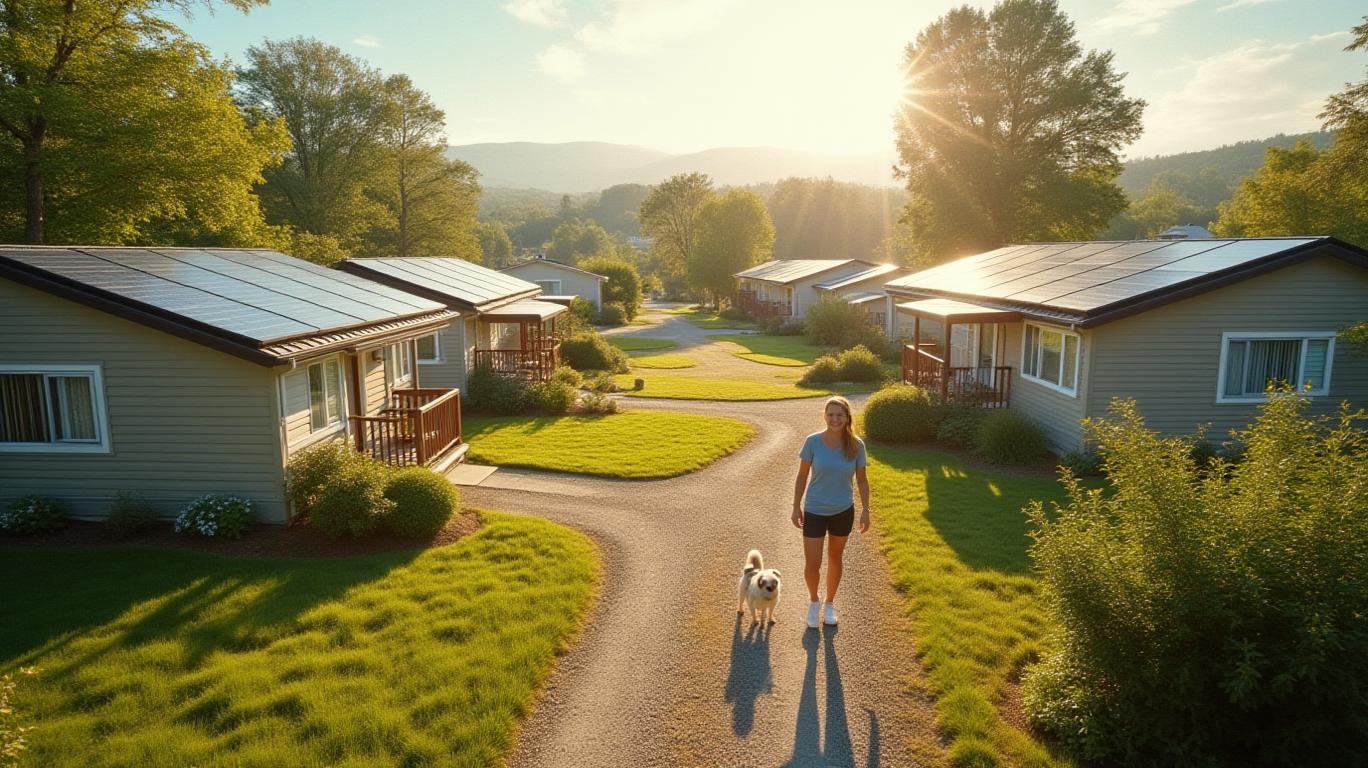UMH Properties Misses Estimates, But Growth Pipeline and Dividends Offer Bright Spots
UMH Properties (NYSE:UMH) reported a mixed first-quarter 2025 performance, falling short of earnings and revenue expectations. However, the company’s robust financial health, strategic initiatives, and long-term growth pipeline suggest resilience amid market headwinds. Let’s dissect the numbers and what they mean for investors.
Financial Performance: A Miss, But Underlying Strengths
UMH’s Q1 EPS of $0.00 missed consensus estimates of $0.036, while revenue of $61.23 million fell short of the $62.88 million forecast. The miss weighed on shares, which dipped 0.39% to $17.70 in after-hours trading. Yet, the company maintained a 5.06% dividend yield—one of the highest in the REIT sector—and retained a “GOOD” Financial Health score from InvestingPro.
A closer look reveals encouraging trends:
- Normalized FFO rose 5% year-over-year to $0.23 per diluted share, driven by an 8% jump in rental and related income to $54.6 million.
- Revenue growth over the past 12 months hit 9.11%, with a strong 54.51% gross profit margin.
- Liquidity remains solid, with a current ratio of 1.67, $35.2 million in cash, and $260 million available on a revolving credit facility.
While the earnings miss caused a dip, UMH’s long-term trajectory—including a dividend streak of 36 consecutive years—supports its valuation.
Strategic Initiatives: Tapping into the Affordable Housing Crisis
UMH is positioning itself to capitalize on the U.S. housing shortage, which it estimates at 4 million homes, with annual construction lagging at 1.3 million. Key growth drivers include:
- Innovation in Product Offerings:
- Solar shingle homes: Reducing energy costs for residents.
- Duplex manufactured homes: Expanding affordability and attracting a broader customer base.
A 94.6% rental occupancy rate underscores strong demand.
Land Assets and Development:
- 2,400 acres of vacant land across 2,400 sites enable plans to add 800 new rental homes in 2025 and develop over 150 expansion sites.
- Recent acquisitions, including two New Jersey communities for $24.6 million, bolster scale.

- Sales Momentum:
- April home sales surged to $4.4 million, more than doubling Q1’s $1.9 million, signaling a potential rebound in demand.
Risks and Challenges
- Interest Rate Volatility: UMH’s debt portfolio is 99% fixed-rate, with a weighted average rate of 4.39%, mitigating near-term refinancing risks. However, the company is actively refinancing at 5.5%–5.75%.
- Tariffs and Cost Pressures: Potential 3–5% price hikes on homes due to tariffs on materials, though executives downplayed operational disruptions.
- Market Competition: Rising supply of affordable housing could pressure margins if demand softens.
Outlook and Valuation
UMH reaffirmed its 2025 FFO guidance of $0.96–$1.04 per share, assuming a 5% rent increase and robust sales. With a market cap of $1.46 billion (or $2.5 billion including preferred equity), the stock trades at a 17.7x 2025 FFO multiple, slightly below its five-year average of 18.5x.
Conclusion: A Buy for Income and Growth Investors
Despite the Q1 miss, UMH’s fundamentals remain strong. The 5.06% dividend yield, 5% FFO growth, and strategic land assets position it to capitalize on the affordable housing gap. While risks like interest rates and tariffs linger, UMH’s fixed-rate debt, liquidity, and execution on new products (e.g., solar shingles) reduce downside exposure.
With 800 new homes in the pipeline, a 9.11% revenue growth trajectory, and a 94.6% occupancy rate, the stock appears attractively priced for investors prioritizing dividends and steady growth. The earnings stumble is a short-term speed bump on a path toward long-term value creation.
Investors should monitor Q2 results for further sales trends and refinancing progress, but for now, UMH remains a compelling play in a sector with structural tailwinds.

_0541ea711750289942943.png)
_85d765531750289985587.jpg)







